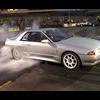Vq35hr Makes Wards' Top 10 Engines Of The Year
Announcements
-
Similar Content
-
Latest Posts
-
I would, especially if the car has had a few start ups or short trips to move it around But then I'm anal as fark about oil changes, as oil is cheap, and servicing is fun.....
-
These are still here, but, when I sell the SS they will go with it if not sold prior
-
As someone who has had a car sitting for a year... would you change *that* oil? It's still sitting in a container, right? If oil is fine in a shelf, is it not fine in a sump? I assume this is something specific to the oil being *unused* (i.e on shelf)
-
By Dose Pipe Sutututu · Posted
Wow.. I literally just refreshed my oil with oil from a 20L mini drum that's probably about 5 years old. It will get a thrashing in a couple of weeks on the track too. But hey sure, if you want to discard new oil, thwn go for it. -
I'd say if you put the cap on loosely and left it there for, say, 10 years, it would still be fine.
-






Recommended Posts
Create an account or sign in to comment
You need to be a member in order to leave a comment
Create an account
Sign up for a new account in our community. It's easy!
Register a new accountSign in
Already have an account? Sign in here.
Sign In Now